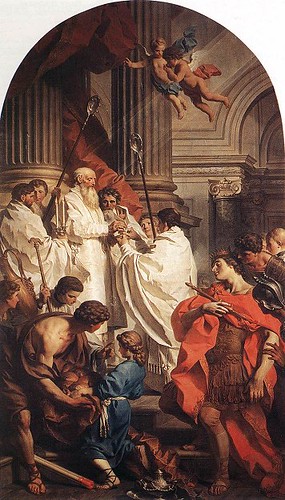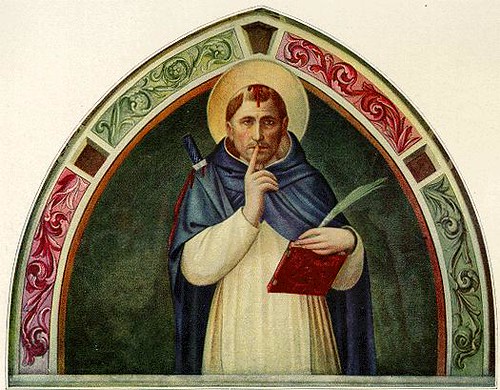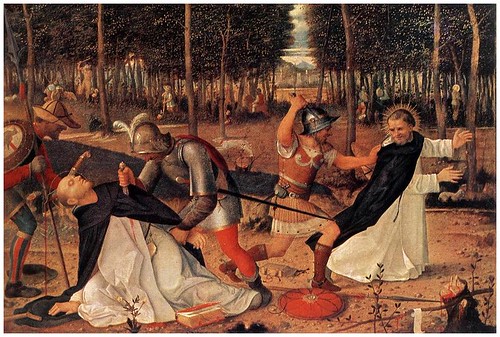 Today we remember St. Vincent Yen, one of the Martyrs of Vietnam, individually. The following is from Witnesses of the Faith in the Orient, Dominican Martyrs of Japan, China, and Vietnam translated by Sister Maria Maez, O.P.
Today we remember St. Vincent Yen, one of the Martyrs of Vietnam, individually. The following is from Witnesses of the Faith in the Orient, Dominican Martyrs of Japan, China, and Vietnam translated by Sister Maria Maez, O.P.This holy martyr was born in Tra-lu in the province of Nam-dinh in 1764. He was trained under the supervision of Bishop Ignatius Delgado, who ordained him a priest at the age of 40. He was appointed to the care of souls. His Calvary began right away. He was secretly denounced to the Mandarins, taken prisoner and made to carry a heavy cangue [yoke]. He spent a month in this condition until he was rescued by friends.
Vincent asked to be admitted to the Dominican Order and received the habit on 22 July 1807. His purity and considerate treatment of others was such that he won everyone’s respect. “His eyes, his whole facial expression was an eloquent testimony of his holiness.” Even the enemies who captured him remarked that they had taken a prisoner who “was a man with a most beautiful countenance.” It was no wonder that he was able to win over all those entrusted to his care.
Vincent was once again imprisoned on 8 June 1838; on the 11th, the Mandarins came together to judge him. The leading Mandarin, a good man of means and influence, resisted imposing the death sentence. He proposed to Father Yen to say that he was a doctor, not a priest. Vincent rejecterd this outright, saying: “I am not a doctor, I am a priest. My office is to offer sacrifices to God and to preach the faith of Jesus Christ for whom I am ready to die. I do not accept the offer for the price of a lie.” Seeing the constancy of the priest, they took the message to the Emperor, who dictated the sentence himself. “Do Yen, native of this Kingdom, principal teacher of the Religion of Jesus Christ, has followed a false religion and does not wish to abandon it. He is truly a dangerous fool and is deserving of suffering any abomination, because he does not wish to follow what he knows and what he should do. Let his head be cut off.”
The venerable old man of 74 walked erectly, calmly and with joy to his execution on 30 June 1838. He was beheaded for being a priest of the Religion and for teaching it to the people.
The Process of Beatification says that Vincent had a most gentle disposition, a happy face and limitless mercy, — that he was prudent, peaceful, very virtuous and that his life had been an edification to all.

















